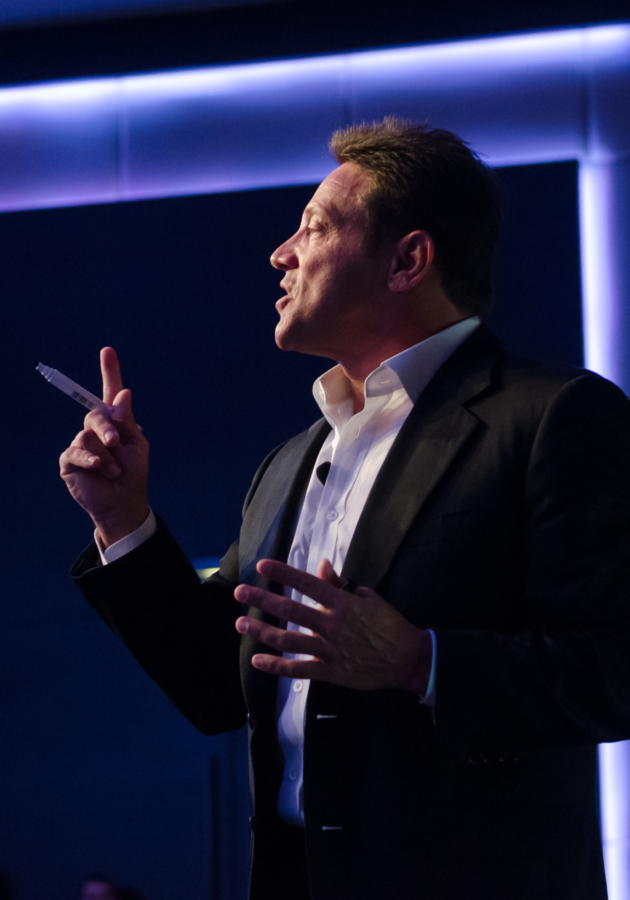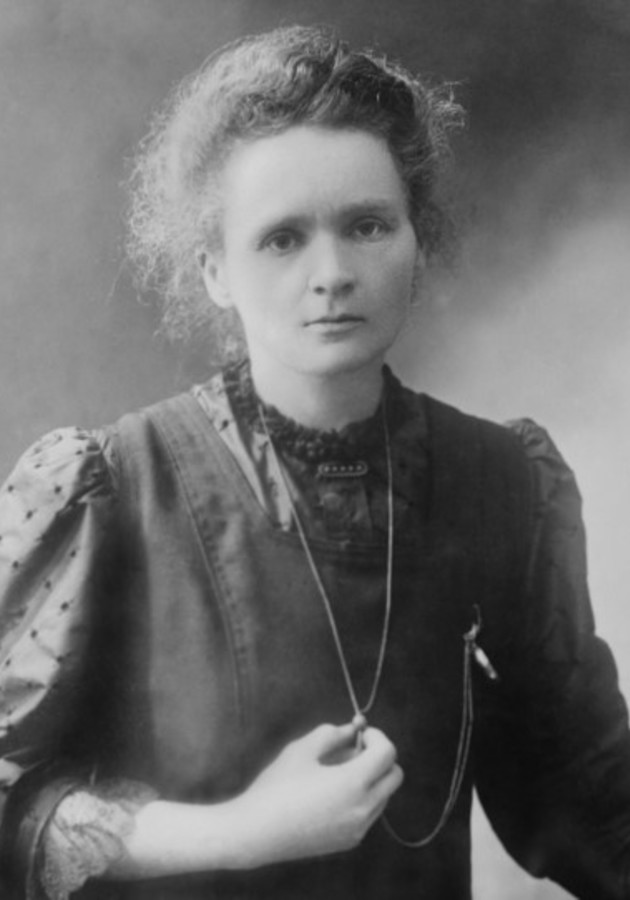Stress is such a big part of everybody’s life nowadays that we’ve practically grown used to it.
If you don’t believe us, just try doing nothing for 30 minutes. Can you? You probably can’t.
And that’s because your mind almost instantly steers in some unwanted direction (Oh, I forgot to ______!), before doing a U-turn to head into the world of future worries and anxieties (What if they called and __________) so that it can finally settle on the most unwelcoming thought: I should be doing something.
Frighteningly, in the absence of worries such as these, most people feel as if something is missing from their lives, as if something is just too quiet and peaceful to be real. What they don’t get, however, is that this means they have actually settled for a way of life which will never be stress-free.
Written in 1948, How to Stop Worrying and Start Living by Dale Carnegie has grown to become a self-help classic and one of the best books on self-improvement ever written. It aims to help readers recognize and analyze their worries before teaching them how to break and master the worry habits by cultivating a mentally right attitude.
The author admits that , How to Stop Worrying and Start Living doesn’t contain “anything new in it,” and is nothing more than “a collection of successful and time-tested recipes to rid our lives of worry.”
“We already know enough to lead perfect lives,” writes Carnegie. “We have all read the Golden Rule and the Sermon on the Mount. Our trouble is not ignorance but inaction. The purpose of this book is to restate, illustrate, streamline, air condition, and glorify many ancient and basic truths and kick you in the shins and make you do something about applying them.”
As always, our job is to wrap up its wisdom in a smaller package so that you can start applying it right away!
Let’s go!
21 thought-provoking words to banish worry forever
Have you ever heard of a guy named William Osler?
Well, you should have!
He was the most famous physician of his generation, Regius Professor of Medicine at Oxford, one of the founders of the famous Johns Hopkins School of Medicine, the instigator of bedside clinical training, and one of the "greatest diagnosticians ever to wield a stethoscope."
According to Carnegie, he would have been none of this had he not read, in the spring of 1871, in the 21st year of his life, 21 words written by Thomas Carlyle: “Our main business is not to see what lies dimly at a distance, but to do what lies clearly at hand.”
Osler turned this sentence by Carlyle into his creed, and he constantly relayed it on to his students.
“Shut off the past!” he is reported to have lectured them. “Let the dead past bury its dead. Shut out the yesterdays which have lighted fools the way to dusty death. The load of tomorrow, added to that of yesterday, carried today, makes the strongest falter. Shut off the future as tightly as the past. The future is today. There is no tomorrow.”
Did Osler mean that we should not make any effort to get ready for tomorrow?
Of course not!
He was just very much aware that, to use Carnegie’s interpretation, “the best possible way to prepare for tomorrow is to concentrate with all your intelligence, all your enthusiasm, on doing today's work superbly today.”
So, start doing that! Start cultivating the habit of life of “day-tight compartments.”
Remember Christ’s prayer: "Give us this day our daily bread.” Today’s bread is the only kind of bread you can possibly eat, so there’s no point in complaining about the stale bread you ate yesterday or wondering about what kind of bread you’ll eat if you lose your job tomorrow.
Today is the only thing you have in the most literal sense imaginable. It’s about time you understand this, and turn it into a powerful symbol for living in general.
3 magic steps to master worry in any situation
Willis Haviland Carrier is widely considered the man who launched the air-conditioning industry: he invented the first electrical air conditioning unit as early as the turn of the 20th century!
Of course, he didn’t become a pioneer overnight. When he was a young man, he was a simple worker for the Buffalo Forge Company in Buffalo, New York.
Once, he was handed the assignment of installing a gas-cleaning device in a plant of a glass company. Since the method of cleaning gas he was asked to use was rather new, unforeseen difficulties came up. Carrier was on the brink of costing his company twenty thousand dollars—about half a million in today’s money!
Carrier was stunned by his failure: “It was almost as if someone had struck me a blow on the head,” he told Carnegie during a lunch meeting. “My stomach, my insides, began to twist and turn. For a while I was so worried, I couldn't sleep.”
And then, as soon as he realized that worrying would get him nowhere, he figured out a way to handle his problem without worrying.
The anti-worry technique Carrier devised back in the last decade of the 19th century is quite simple and can be used by anyone, even today—for any kind of Trouble (with a capital T).
It consists of three steps:
Step 1: Ask yourself: “What is the worst that can possibly happen if I can't solve my problem?”
Step 2: After figuring out the worst, prepare yourself mentally to accept it—if necessary.
Step 3: Now that you’ve mentally accepted the worst outcome, try to calmly improve upon it—after all, nothing worse than the worst can happen, so you have nothing to lose.
“Acceptance of what has happened is the first step in overcoming the consequences of any misfortune,” wrote William James once.
And this is what Carrier’s method is all about.
4 rules to analyze and solve worry problems
Try it, and you’re bound to find out that Carrier’s method is more than just a little helpful. However, it would never be able to solve all worry problems, by any stretch of the imagination.
If you want to achieve that, you must equip yourself with a toolkit which can help you tackle them head-on.
It is a no-nonsense four-step technique which you can start applying today:
Rule 1: Get the facts.
“Half the worry in the world is caused by people trying to make decisions before they have sufficient knowledge on which to base a decision,” said once Herbert E. Hawkes, Dean of Columbia College. Eliminate emotions: facts are facts only if they are true for everybody. Be impartial and objective while securing them.
Rule 2: After weighing all the facts as carefully as possible, come to a decision.
Write down precisely what your worry is, and next to it, start writing down what you can and what you can’t do about it. Only once you put things on paper, you’ll have a clearer image in your head and be able to reach a decision.
Rule 3: Once you reach your decision—act!
"When once a decision is reached and execution is the order of the day, dismiss absolutely all responsibility and care about the outcome," wrote once William James. So, dismiss all anxiety and start immediately carrying out your decision. After all, you’ve just analyzed through and through your problem, and acting is the only thing that’s left.
Rule 4: In the future, when tempted to worry about a problem, ask yourself these four questions and answer them as precisely as you can:
What is the problem?
What is the cause of the problem?
What are all possible solutions?
What is the best solution?
It will save you a lot of time—not to mention anxieties and worries!
6 laws to break the worry habit before it breaks you
It is not that difficult to break the worry habit: just stick to the six laws below, and you’ll be fine. But remember: laws are laws for a reason—you must abide by them fully and without exceptions, no questions asked.
• Stay busy. If you want to cure your “wibber gibbers,” the best thing you can do is keep yourself busy. The more free time you have, the more time you have to think about things you shouldn’t, whether past regrets or future anxieties. Fortunately, the human mind is incapable of thinking too many things at the same time, so every distraction is good. Start learning a new language, buy a guitar, or get a gym membership. Everything’s better than worrying!
• Don’t bother with the small stuff. Carnegie describes the little things that ruin your happiness as “the mere termites of life.” And that’s quite an accurate description if you ask us! It is for a reason the Romans constantly repeated the saying “the eagle does not catch flies:” just like the law, don’t concern yourself with trifles (that’s another Latin saying, by the way: “de minimis non curat lex”).
• Use the law of averages to outlaw your worries. You need to start understanding numbers. If something is unlikely to happen, then it probably won’t happen. Start asking yourself: "What are the odds against this thing's happening at all?"
• Cooperate with the inevitable. Be a Stoic: if you know that something is beyond your power to change or correct , then accept it. Say to yourself: "It is so; it cannot be otherwise."
• Put a "stop-loss" order on your worries. A stop-loss order, in the world of exchange, is an order by which you buy or sell a stock once the price of the stock reaches a specified price (the stop price). Apply this principle to your life as well: “decide just how much anxiety a thing may be worth—and refuse to give it anymore.” For example, inform your friend that you’ll wait for him for 10 minutes and not a minute more. If he/she is late—leave.
• Let the past bury its dead. Or, to use Carnegie’s metaphor: don't saw sawdust—just throw it away.
7 ways to cultivate a positive attitude
There are many lists of instructions and mini-manuals on how to overcome worry in Dale Carnegie’s book, but we’ll wrap up our summary with a bit more positive guide from it.
This one is based on do’s instead of don’ts, and its goal is to help you reach the right kind of mental attitude so that you don’t have to deal with worries at all—but eliminate them instead.
It’s a sort of prevent rather than treat guide which consists of seven rules:
Rule 1: “Our life is what our thoughts make it," said Marcus Aurelius two millennia ago. Never forget that. Fill your mind with thoughts of peace, courage, health, and hope.
Rule 2: Stop trying to get even with your enemies: it will hurt you more than it will hurt them. Follow General Eisenhower’s advice: let's never waste a minute thinking about people we don't like.
Rule 3: Rule 3 is a three-part rule:
• Expect ingratitude so that you don’t get disappointed when it eventually hits you. Jesus cured ten lepers, and only one returned to thank him. Why should it be any different when you are in question?
• In addition to lowering your expectations, raise your presence in the world of others: start giving more, both literally and (much more importantly) metaphorically. Not because you’ll get something in return, but, simply, for the joy of giving.
• Do what you want others to be doing. Gratitude and giving are “cultivated” traits: train other people (starting from your children) to be grateful and generous .
Rule 4: Count your blessings--not your troubles!
Rule 5: Don’t imitate others: find yourself and do everything you can to remain yourself. “Envy is ignorance,” said Emerson, and "imitation is suicide."
Rule 6: When life hands you a lemon, try to make lemonade.
Rule 7: Forget your unhappiness by getting busy with creating a little happiness for others. "When you are good to others,” wrote Benjamin Franklin once, “you are best to yourself.”
Final Notes
Even though outdated here or there, and repetitive more often than necessary, How to Stop Worrying and Start Living is a self-help book of the type not many people can write nowadays.
A compilation of other people’s thoughts, habits, and beliefs, it abounds with inspiring quotations and pieces of advice from great philosophers and scientists, intellectuals and poets—and it is structured in a way that helps its readers put its wisdom in action almost immediately.
If you enjoy reading self-help books, How to Stop Worrying and Start Living is as good as a book can get. The same holds true if you think you worry too much and are desperate to reduce the amount of stress in your life.
12min Tip
Never forget that, more often than not, it is not a matter of externals: both happiness and worry come from the inside. Start focusing on today and you’ll live a much more peaceful and happier life. Find Sibyl F. Partridge’s “Just for Today” program, start following it, and tackle most of your worries, as you simultaneously increase your portion of what the French call la joie de vivre.





























